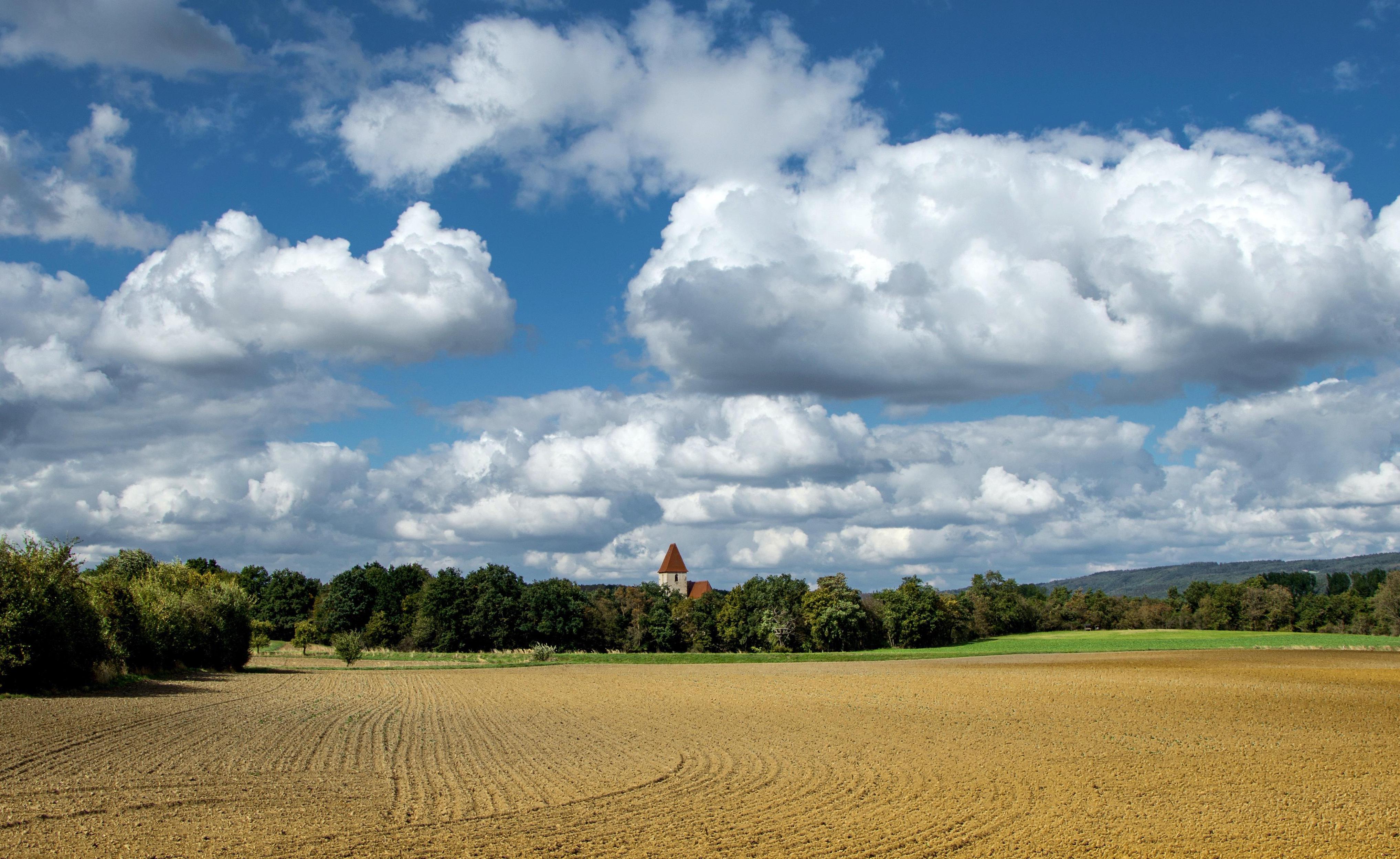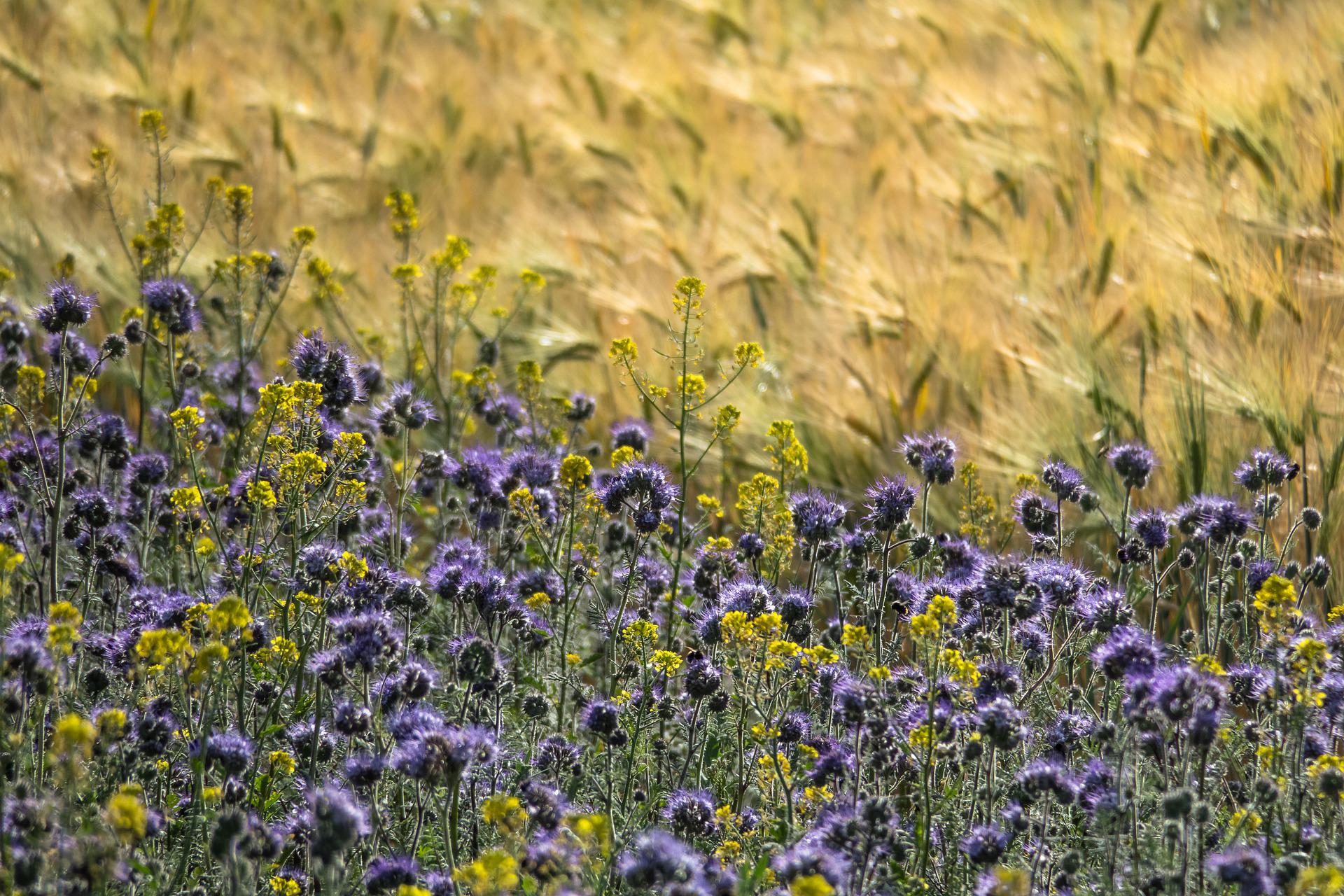Main navigation
Carbon farming - climate protection on agricultural land?
Agriculture plays a key role in helping to achieve European climate targets. Central to this goal are measures that are collectively referred to as carbon farming and are often used for offsetting greenhouse gas emissions. Two Baden-Württemberg companies - CarboCert and Carbonfuture - are active in addressing the challenges and potentials of carbon farming.
Ever since the adoption of the European Climate Law in 2021, everyone is talking about net zero. Every sector in the economy is being asked to work towards climate targets. Agriculture has a major role to play here: although agriculture is responsible for around ten percent of the European Union's greenhouse gas emissions, plants also remove carbon from the atmosphere by fixing it through photosynthesis and storing it in biomass, ensuring that at least some carbon is stored as humus. Soils used for agricultural purposes can therefore effectively remove carbon from the atmosphere, rendering it harmless to the climate. In this way, soil becomes a carbon sink. It is therefore a core element towards achieving climate neutrality. There will always be a minimum level of unavoidable emissions that need to be offset to reach net zero.
This is why the European Commission sees the sustainable management of agricultural land and the creation of carbon sinks as key to achieving European climate targets.1) The potential of agriculture to help reach these goals is usually referred to as carbon farming. In the public perception, carbon farming generally involves measures to maintain and increase the amount of carbon stored in plant material and soil organic matter on agricultural land.
Humus build-up, biochar and peatlands - carbon storage in agriculture

There are a number of possible measures to choose from in carbon farming: approaches that promote an increased input of organic matter into the soil and ensure humus build-up are considered central. These include, for example, the increased cultivation of intermediate crops and undersown crops or the incorporation of harvest residues. The cultivation of permanent crops such as Miscanthus can also be beneficial.2) By developing widely branched root systems over longer periods of time, carbon can thus be introduced into deeper soil layers. Similar advantages are offered by agroforestry systems, which combine trees, shrubs or hedges with crop production or animal husbandry and can be adapted to suit local conditions - in Baden-Württemberg, for example, this takes the form of orchards.3) In addition to contributing to climate protection, all these approaches generate other synergistic effects. For example, soils with higher humus content are generally considered more resilient and are characterised by higher water and nutrient retention capacities. The cultivation of intermediate and permanent crops, for example, also leads to improved ground cover, which benefits soil fauna and reduces the risk of soil erosion.
Introducing biochar into soil is another possible carbon farming measure. Since biochar generally only degrades very slowly in soil, large amounts of carbon can be removed from the atmosphere over longer periods of time. Biochar also acts as a soil conditioner because its special surface properties help improve the soil’s water and nutrient holding capacity .4)
Drained and existing wetlands and peatlands also play a special role in carbon farming. In the past, the practise of draining these areas to create space for agricultural land was widespread. However, wetlands sequester significant amounts of carbon that are released when drained. Carbon farming initiatives therefore aim at conserving existing peatlands over the long term as well as rewetting drained areas to create carbon sinks. Pilot projects are therefore attempting to establish value chains based on cultivating and using plants such as reeds, which protect and conserve peatlands.5)
Carbon farming as a compensation measure

Against the background of increasing numbers of companies, governments and other organisations that are committing to net zero, approaches aimed at maintaining and expanding carbon sinks are steadily gaining in importance and are often used as voluntary carbon offsetting measures. Accordingly, companies that provide offsetting solutions are increasingly focussing on carbon farming. This is the case for two companies from Baden-Württemberg in Germany:
CarboCert6) from Bodnegg near Ravensburg, focuses on measures that contribute to carbon storage in agricultural areas by increasing humus formation. To this end, the company works in cooperation with farmers who are rewarded for measures they take to promote the formation of humus. Customers can then purchase humus certificates as a carbon offsetting measure.
A company called Carbonfuture from Freiburg is taking a different approach, where one of its measures involves using biochar for agriculture. Like all providers of offsetting measures, both companies must ensure the quality of their carbon offsets by basing their approaches on three evaluation criteria, namely: measurability, permanence and additionality.
Every compensation measure needs to be able to contribute measurably to carbon storage. CarboCert, for example, relies on regular soil analyses that reliably monitor humus build-up and carbon storage. This ensures that only carbon that has actually been sequestered is taken into account when new certificates are issued.
Only if carbon is removed from the atmosphere in the long term - ideally over periods of hundreds of years - can a sink be considered to have a climate-relevant effect. This requirement poses a special challenge for most offsetting measures on the carbon farming spectrum. This is because if a particular measure, such as increased cultivation of intermediate crops, is not implemented, stored carbon can quickly be re-released, nullifying the climate mitigation effect. Any evaluation must therefore always be considered and critically scrutinised as to whether the compensation measure is long term. This is precisely where Carbonfuture sees the potential of biochar. When issuing compensation certificates, the company is certain that the applied biochar will remain stable over periods of more than a hundred years, even after a small degree of degradation and the associated re-release of carbon have been taken into account.
The third quality criterion is additionality. Any offsetting measure must go beyond previously planned activities. This requirement is particularly applicable to projects that promote the build-up of humus on agricultural land in Germany, and is a provision that can be challenging as humus preservation is already enshrined in the German Soil Protection Act. The extent to which corresponding projects can be used as carbon offsetting measures is often therefore a controversial issue.
Classification, potential & outlook
Given the aforementioned criteria, the question arises as to how to assess the potential of carbon farming with regard to climate protection measures. Experts believe that German agriculture can create sinks in the order of 8 to 15 million tonnes of carbon dioxide equivalents and thus contribute to climate protection. However, this potential is outweighed by annual emissions of around 106 million tonnes of carbon attributable to agricultural and related activities.7) This imbalance makes it clear that, for a net-zero future, carbon sinks will be needed primarily to offset unavoidable agricultural emissions. Using carbon farming to offset activities in other sectors should therefore be carefully scrutinised. Nevertheless, the European Union is currently striving to introduce an official certification system for technical as well as agricultural and forestry carbon sinks.8) The aim is to enable regulated trading of such carbon offset credits in the long term. It remains to be seen how this will affect carbon farming activities.
Even if using carbon farming measures for compensation purposes does not seem advisable in every case, it should be welcomed nonetheless. Regardless of their function as carbon sinks, carbon farming measures usually generate a number of other positive effects. Despite these benefits, however, it should not be forgotten that reducing greenhouse gas emissions is the central goal of all climate protection measures. For this reason, the European Union, for example, is increasingly using a broader definition of carbon farming that more closely reflects this requirement. It is to be hoped that the public perception of carbon farming will change to reflect this new definition.
References:
1) Communication from the Commission to the European Parliament and the Council. Sustainable Carbon Cycles {SWD(2021) 450 final} - {SWD(2021) 451 final}
2) More about the use and utilisation of Miscanthus can be found in the article "Providing growledge – ressources and products for the bioeeconomy" https://www.biooekonomie-bw.de/fachbeitrag/aktuell/providing-growledge-ressourcen-und-produkte-fuer-die-biooekonomie, 14th July 2022
3) More information about agroforestry systems can be found in the article "Agroforestry for sustainable agriculture" https://www.biooekonomie-bw.de/en/articles/news/agroforestry-for-sustainable-agriculture, 14th July 2022
4) More information about the production and utilisation of biochar can be found in the article "NovoCarbo turns plant waste into biochar" https://www.biooekonomie-bw.de/en/articles/news/novocarbo-turns-plant-waste-into-biochar, 14th July 2022
5) More information about paludicultures can be found in the publication "Peatlands as CO2 reservoirs: simultaneous renaturation and use" https://www.biooekonomie-bw.de/en/articles/news/peatlands-co2-reservoirs-simultaneous-renaturation-and-use, 14th July 2022
6) https://www.carbocert.de/
7) Don, Axel 2022:. Nur die 'große Lösung' funktioniert. DLG-Mitteilungen 05/2022
8) https://ec.europa.eu/info/law/better-regulation/have-your-say/initiatives/13172-Certification-of-carbon-removals-EU-rules_en